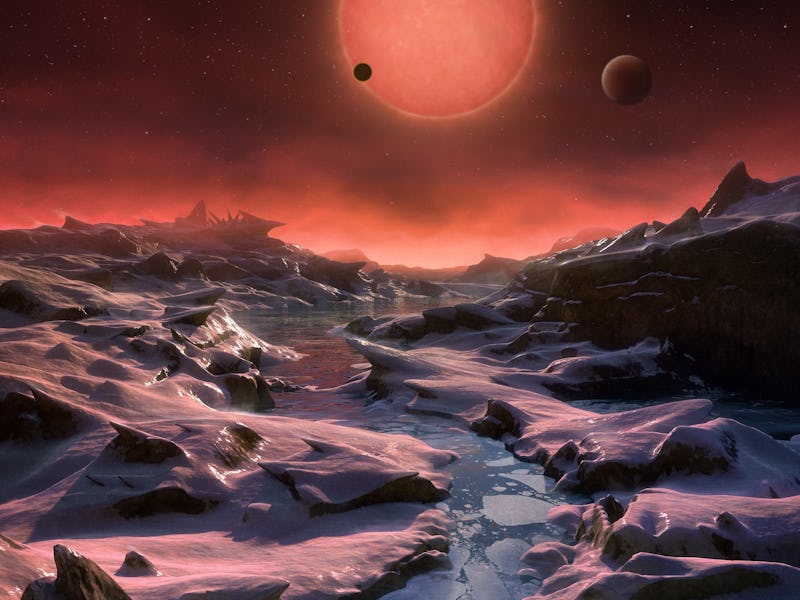Wednesday should be a big day for humanity’s understanding of space, as NASA is set to announce a major discovery related to exoplanets.
The space agency isn’t leaking any details, but the midday announcement lines up with a study being published in Nature related to exoplanets, the term for worlds that exist outside our solar system. Based on NASA’s track record with these kinds of discoveries, it’s likely the agency is poised to tell the world it has just stumbled upon a new cluster of Earth-like planets which could perhaps sustain life.
The last time NASA raised the specter of an exoplanet discovery, it was exactly that: a bombshell confirmation of over 1,200 new exoplanets, including nine of which exhibited characteristics that suggest they might be habitable to living organisms.
It’s important to emphasize a couple things here, lest the media misinterprets the findings and warps the discovery into fake (space) news. The odds that NASA has found an Earth 2.0 are extremely slim.
The new findings will probably list out dozens or even hundreds of new exoplanets, but that doesn’t mean each one could host alien life. And the exoplanets that are listed as potentially habitable won’t necessarily possess the right qualities that make them amenable to life (whether it’s from Earth or from elsewhere), because the main criteria for determining habitability so far is just whether or not a planet resides in an orbital plane where liquid surface water could exist.
Despite all that, there are some clues. The speakers at the press conference make up a diverse crew of exoplanet and planetary science researchers. The briefing will feature Michael Gillon, an astronomer at the University of Liege in Belgium, who has published research related specifically to Earth-sized exoplanets (the kind humans might be interested in if the species ever decides to settle on another world.)
Sean Carey, manager of NASA’s Spitzer Science Center in Pasadena, California, will also be present, suggesting the Spitzer Space Telescope played an important role in the new findings. Spitzer is a valuable tool in determining the composition of a planet and whether or not it’s rocky.
Nikole Lewis, an astronomer at the Space Telescope Science Institute, specializes in characterizing exoplanet atmospheres using data collected through Spitzer. Sara Seager is another renowned exoplanet researcher from MIT who has pioneered a great deal of research in determining exoplanet atmospheres as well.
The presence of both Lewis and Seager at tomorrow’s conference, along with Carey and Gillon, is a pretty good sign NASA is going to tell the world it has identified a few new Earth-like worlds with Earth-like atmosphere. It’s totally unclear how far away these planets might be — and that little bit of information is going to radically alter how we view the new discoveries. The exoplanets will certainly be a few light-years away at the very least (the closest exoplanet to Earth, Proxima b, orbits the closest star not named the sun), but the farther off they reside, the less exciting the new findings will probably seem.
After all, if getting to Earth 2.0 means spending thousands of years in an interstellar commute, it would likely take thousands of years before we have the technology to get there.
You can tune watch NASA TV at 1 p.m. EST on Wednesday to learn more about what the agency has up its sleeve. If you miss it, there’s a Reddit AMA (Ask Me Anything) session about exoplanets at 3 p.m., with scientists available to answer questions in English and Spanish.
